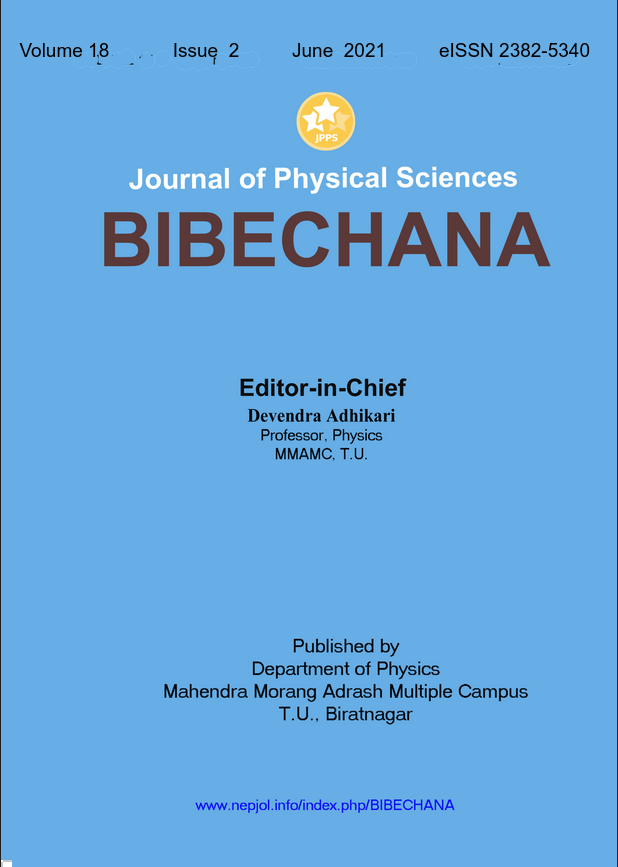Visualization, formulation and intuitive explanation of iterative methods for transient analysis of series RLC circuit
DOI:
https://doi.org/10.3126/bibechana.v18i2.31208Keywords:
Iterative method, Transient, Damping, Runge-Kutta, RLC circuit, Error AnalysisAbstract
The time varying currents and voltages resulting from the sudden application of sources usually due to switching are transients. An RLC circuit is an electrical circuit consisting of a resistor, an inductor, and a capacitor, connected in series or in parallel. The transient response is dependent on the value of the different characteristics of damping factor (i.e., over damped, critically damped and under damped). We have computed the numerical solutions of second order differential equation with initial value problem (IVP) by using Explicit (Forward) Euler method, Third order Runge-Kutta (RK3) methods and Butchers fifth order Runge-Kutta (BRK5). The observation compares this numerical solution of ODEs obtained by above-mentioned methods among them with necessary visualization and analysis of the error. These iterative methods will be extended and implement to analyze the transient analysis of an RLC circuit. We have examined the superiority of those methods over one another. The Butchers fifth order Runge-Kutta (BRK5) method is found to be the best numerical technique to solve the transient analysis due to its high accuracy of approximations. Moreover, we consider the possibility of discussion and analyze above mentioned iterative methods in the cases of different characteristics of damping factor.
BIBECHANA 18 (2) (2021) 9-17
Downloads
Downloads
Published
How to Cite
Issue
Section
License
This license enables reusers to distribute, remix, adapt, and build upon the material in any medium or format for noncommercial purposes only, and only so long as attribution is given to the creator.




